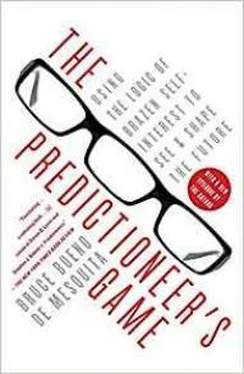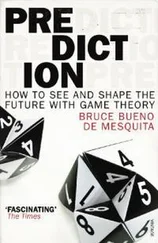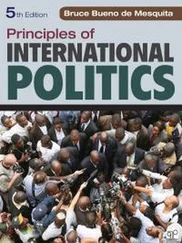Summing up, the Bruce Bueno de Mesquita way certainly cut through a lot of the haggling and allowed me to sidestep the obvious “well, how much are you offering?” or “you’ll have to call in and see us.”
It also got me to the nitty-gritty of price much faster, and all from the comfort of my own home, saving in one case €2,450 off the opening price.
Not bad for less than 10 minutes’ work on the phone.
Mr. Daugherty is not the only one to report success. During an interview on Michael Krasny’s National Public Radio show Forum , a caller who said he had used the car-buying method claimed to have saved $2,000. Krasny also acknowledged having used the method (though he said he had done so before reading the book) and said he believed he had saved $1,000. If you’re going to buy a car, please try my method and send me a comment to post on the book’s website.
Car buying is one thing; accurately predicting big national security issues is another. In Chapter 10 you saw me daring to be embarrassed, making predictions that were about the future at the time when I was originally writing that chapter. Now we can look back over the last few months of 2009 and the first quarter of 2010 to see how I did. Let’s start with developments in Pakistan.
I raised three pretty big questions about how Pakistan’s policy was likely to unfold. They were:
How willing would the Pakistani government be to pursue militant groups operating in and around Pakistan, including al-Qaeda, the Pakistani Taliban, and the Afghan Taliban?
Will the Pakistani government allow U.S. military forces to use Pakistani territory to launch efforts to track down militants?
What level of U.S. foreign aid to Pakistan was likely to change the Pakistani leadership’s approach to pursuing militants?
Within the context of these big-picture issues, the game was used to make several more detailed predictions. Here’s a list (with page references) of those predictions, accompanied by brief accounts of what has happened:
PREDICTION (on this page):The Zardari government, without support from Sharif, would depose Musharraf in June or July 2008.
OUTCOME:The Zardari government actually forced Musharraf to step down in August.
PREDICTION (on this page):The militants and the Pakistani government would negotiate an accommodation. After June 2008 the government would pay only lip service to going after the militants, and the Bush administration would prove unable to change its mind in the absence of a fundamental shift in foreign aid policy.
OUTCOME:There is scant evidence of a concerted effort by the Zardari government to fight the militants in the latter half of 2008. There was a brief military offensive against the Taliban begun on June 28, which ended in early July with one militant killed. After that, although the Taliban aggressively pursued expansion, the government did little in response. Rather than fight the militants, the government made a deal with the Taliban in February 2009, paying them about $6 million and agreeing to the imposition of Sharia law in the Swat Valley in exchange for the Taliban agreeing to an indefinite ceasefire. The ceasefire unraveled in May. The model did not address how long the agreement would last but did correctly foresee that the two sides would strike a deal after a half year of seeming Pakistani indifference toward the militant threat.
PREDICTION (on this page):The Pakistani military would decline in power faster than the government. This was predicted to produce a heightened risk of a coup between February and June 2009. The model also predicted that by midsummer a coup would become unlikely.
OUTCOME:Although there was talk of a potential coup to bring Zardari down and that talk continued into the fall of 2009, no coup was launched and Zardari remains in power with no current hints that the military is trying to depose him. This is consistent with the model’s conditional forecast (if no coup, then …).
PREDICTION (on this page):The U.S. government would switch from its two-pronged approach—clandestine pursuit of militants by the United States and open pursuit of militants by the Pakistani government—to greater emphasis on direct use of the American military in Pakistan.
OUTCOME:U.S. drone attacks against Taliban and al-Qaeda targets in Pakistan have experienced a tremendous upsurge and are no longer treated as clandestine. Indeed, the U.S. military has allowed American TV broadcasts showing drones being controlled remotely from military bases in the United States. The U.S. government seems to be continuing, as well, to use American armed forces inside Pakistan’s borders. In early February 2010, three Americans were killed in a Pakistani roadside bombing, drawing attention to the barely acknowledged role of the U.S. military in training and otherwise assisting against the Taliban and al-Qaeda. These outcomes echo the model’s predictions. As we will see, the timing of changes in Pakistan’s approach to militants is also consistent with the model’s expectations.
PREDICTION (on this page):If the United States provided the Pakistani government with $1.5 billion in aid (while looking the other way regarding some misappropriation of the aid by Pakistani leaders), then the Pakistani government and military would aggressively pursue militants inside its borders but would not be so aggressive as to shut down the militants completely. Doing so would, after all, put the flow of aid dollars at risk.
OUTCOME:The Kerry-Lugar aid bill was passed at the end of September 2009. It allocated $1.5 billion to Pakistan, tripling aid from its level one year earlier. The bill contained strong language restricting how the Pakistani government could use the money and required an accounting of expenditures. The Pakistani government balked at taking the aid. Senator John Kerry clarified that the bill was not designed to interfere at all with sovereign Pakistani decisions; that is, he essentially assured the Pakistani leadership that the United States would not closely monitor use of the funds. Shortly afterward, the Pakistani government greatly stepped up its pursuit of militants operating within its borders. By February 2010 they had captured the number two Taliban leader, but so far they have certainly not terminated the Taliban’s ability to fight back. This is as predicted.
On the negative side, I presumed, with some evidence within the model’s results, that the U.S. government was unlikely to grant Pakistan $1.5 billion. Still, this was treated as a contingency rather than a firm prediction. The model led to firm predictions under the contingency of less than $1.5 billion in aid (little effort against the militants) and under the contingency of $1.5 billion in aid (significant effort against the militants). The first contingency is consistent with Pakistani efforts prior to passage of the aid bill. The model was accurate regarding the consequences of giving Pakistan $1.5 billion in aid after September 2009, and it is noteworthy that the analysis also led to the conclusion that there was no reason to give Pakistan more than $1.5 billion per year. Congress got that right!
Results out of Pakistan are largely consistent with the model’s predictions, both in terms of the big picture (given that forecasts were made under alternative contingencies) and in terms of lots of nitty-gritty detail. So far, so good!
How about the other big predictions in the chapter “Dare to Be Embarrassed!”? They were about Iran-Iraq relations after the summer of 2010 and were contingent on whether the United States keeps troops in Iraq or fully withdraws. As I am writing in March 2010, we do not yet know which contingency will arise. We will just have to be patient and wait to see what happens during the period covered by the predictions. That, after all, is the point of the chapter. Meanwhile, perhaps some Iran and Iraq specialists would care to put into print what they believe will happen (and why) if the United States stays in or pulls out completely.
Читать дальше












